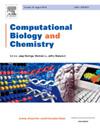基于集成机器学习和量子神经网络的氨基酸序列IDR分类
IF 2.6
4区 生物学
Q2 BIOLOGY
引用次数: 0
摘要
生物学上传统的方法,如Uversky图,依赖于疏水性和净电荷,在准确区分内在无序区(idr)和有序蛋白区方面存在固有的局限性。为了克服这些限制,我们提出了一种集成机器学习(ML)、深度神经网络(DNN)和量子神经网络(QNN)的新型集成框架,以提高IDR分类的准确性。值得注意的是,本研究首次使用qnn进行IDR分类,利用量子纠缠来模拟复杂的特征相互作用。分析氨基酸序列,提取生物物理特征,包括电荷分布、疏水性和结构性质,作为预测模型的输入。ML用于独立特征学习,DNN用于分层交互建模,QNN用于捕获高阶依赖关系。我们的元模型显示了0.85的准确性,超越了单个分类器,突出了埋藏氨基酸的重要性,并突出了尺度疏水性与大的、埋藏的和带电的残基之间的特征相互作用。本研究通过展示qnn在生物信息学中的适用性和建立IDR分类的鲁棒框架来推进计算蛋白质科学。本文章由计算机程序翻译,如有差异,请以英文原文为准。
Amino acid sequence-based IDR classification using ensemble machine learning and quantum neural networks
Biologically traditional methods, such as the Uversky plot, which rely on hydrophobicity and net charge, have inherent limitations in accurately distinguishing intrinsically disordered regions (IDRs) from ordered protein regions. To overcome these constraints, we propose a novel ensemble framework integrating Machine Learning (ML), Deep Neural Networks (DNN), and Quantum Neural Networks (QNN) to enhance IDR classification accuracy. Notably, this study is the first to employ QNNs for IDR classification, leveraging quantum entanglement to model intricate feature interactions. Amino acid sequences were analyzed to extract biophysical features, including charge distribution, hydrophobicity, and structural properties, which served as inputs for the predictive models. ML was utilized for independent feature learning, DNN for hierarchical interaction modeling, and QNN for capturing high-order dependencies. Our meta-model demonstrated an accuracy of 0.85, surpassing individual classifiers and highlighting the importance of buried amino acids and feature interactions between scaled hydrophobicity and large, buried, and charged residues. This study advances computational protein science by demonstrating the applicability of QNNs in bioinformatics and establishing a robust framework for IDR classification.
求助全文
通过发布文献求助,成功后即可免费获取论文全文。
去求助
来源期刊

Computational Biology and Chemistry
生物-计算机:跨学科应用
CiteScore
6.10
自引率
3.20%
发文量
142
审稿时长
24 days
期刊介绍:
Computational Biology and Chemistry publishes original research papers and review articles in all areas of computational life sciences. High quality research contributions with a major computational component in the areas of nucleic acid and protein sequence research, molecular evolution, molecular genetics (functional genomics and proteomics), theory and practice of either biology-specific or chemical-biology-specific modeling, and structural biology of nucleic acids and proteins are particularly welcome. Exceptionally high quality research work in bioinformatics, systems biology, ecology, computational pharmacology, metabolism, biomedical engineering, epidemiology, and statistical genetics will also be considered.
Given their inherent uncertainty, protein modeling and molecular docking studies should be thoroughly validated. In the absence of experimental results for validation, the use of molecular dynamics simulations along with detailed free energy calculations, for example, should be used as complementary techniques to support the major conclusions. Submissions of premature modeling exercises without additional biological insights will not be considered.
Review articles will generally be commissioned by the editors and should not be submitted to the journal without explicit invitation. However prospective authors are welcome to send a brief (one to three pages) synopsis, which will be evaluated by the editors.
 求助内容:
求助内容: 应助结果提醒方式:
应助结果提醒方式:


